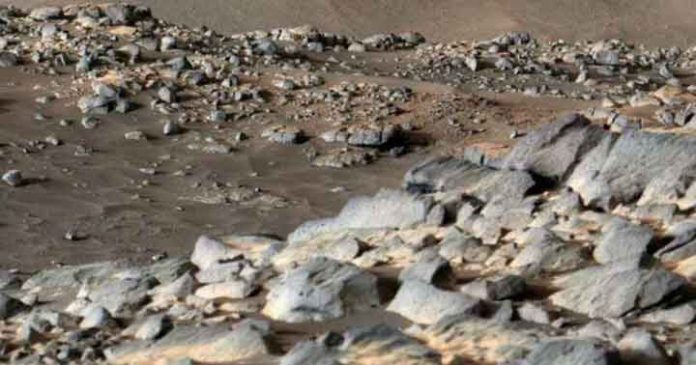INVC NEWS
Washington / Beijing – : This is indeed exciting news! NASA’s Perseverance Rover and China’s Zhurong Rover have made significant discoveries indicating the presence of water on Mars. According to the findings, both rovers have identified signs of flowing rivers and wet sand dunes on the planet.
China’s rover, Zhurong, has revealed that approximately 4 million years ago, the sand dunes on Mars froze solid due to extreme cold. Meanwhile, NASA’s Perseverance has provided indications of a powerful waterway that would have flowed into the Jezero Crater, suggesting a significant amount of water falling at a considerable rate. The river discovered by Perseverance is the largest ever found on Mars, with some areas estimated to be more than 66 feet deep. The presence of rocks of a certain size indicates the preserved river banks.
Jani Radeb, a researcher at Brigham Young University, considers this information crucial as it provides insights into the surface of another planet. China’s rover has identified traces of water on the Martian surface, with a crust forming on the sand dune near the rover due to contact with water minerals. It is speculated that water might have reached this area in the past through frost on the sand dunes or from snowfall caused by the planet’s tilt thousands of years ago.
Ralph Milliken, a planetary scientist at Brown University and a member of NASA’s Mars Curiosity mission, explains that the dust found on Mars contains minerals capable of absorbing atmospheric water. If this material covered the sand dunes, the changing climate could create humidity, enabling the dust to absorb and release water without liquefying. Milliken suggests that this process could occur in various locations on Mars.
The discoveries made by the rovers indicate that China’s rover examined wet sand dunes, while Perseverance found evidence of a powerful ancient river. This river was deep and fast-flowing, forming part of a network of waterways that emptied into the Jezero Crater. Importantly, this is the same region where Perseverance has been investigating for signs of microbial life over the past two years. The presence of a substantial river suggests the transport of a significant amount of debris, including a curved feature measuring 820 feet long, indicating the presence of flowing water. A specific area within this geological formation has been named Sprinkle Haven.
The discoveries made by both rovers contribute to our understanding of Mars and increase the potential for finding evidence of past or even present life on the planet.














[…] NASA and China’s Rovers Uncover Signs of Water and Ancient Rivers on Mars […]